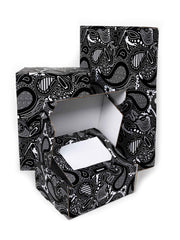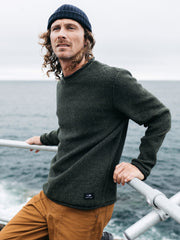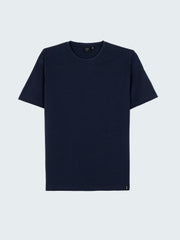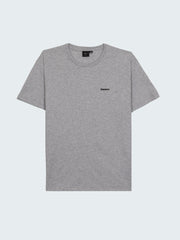Ambassador Easkey Britton discussed the importance of embracing the natural rhythms of body and ocean, and how being more aware of the cycles – both those within ourselves and in nature – can enhance our connections to the world around us.
Easkey Britton: Cycles Of Connection
09.04.25
4 min read
Written by Easkey Britton
Photography by Max Riton & Easkey Britton
Cycles are everywhere in nature, and within our bodies. Women and those who menstruate, especially, have this incredible inbuilt intelligence system that directly links to the natural rhythms of the world around us. This is something our ancestors understood, with cyclical living evident in stone circles, burial chambers, and spiral patterns carved into ancient sacred sites. Yet, many of us today remain unaware of the power of this potential.
We live in a society where the natural rhythms of our cycles are suppressed to conform and perform well. This inner-body wisdom was something I often felt I had to suppress as a competitive surfer, in particular during my teenage years. The focus was always on performance, the need to be more aggressive and “attack” the wave. This has contributed to a culture where period shame prevents girls from participating in sports. In the UK, a recent survey found that over 75% of girls aged 15-18 have stopped participating in sports due to periods. The number is likely to be higher for outdoor watersports, despite another recent study revealing that cold water swimming greatly reduced menstrual and perimenopause symptoms.
As a lifelong surfer with a deep connection to the sea, I’ve often wondered how it would be if we could learn to move with the tides in and out of the water, honouring our inner ebb and flow. Someone who understood the wisdom of her body and the power of her flow was Queen Medb (Maeve), a legendary figure from Ireland’s most epic saga, Táin Bó Cuiligne (The Cattle Raid of Cooley). Maeve was a warrior-queen who, during a battle retreat, stopped to relieve herself as menstruation began. Her enemy, Cúchulainn, showed respect and allowed her troops to retreat safely. The flow of her menstrual blood or fúal fola (literally, “blood water”) created three great channels in the landscape, marking reverence for the power of menstruation.
Since creating the short film A Lunar Cycle eight years ago, I’ve continued to explore how the energy of the different phases of my cycle expresses itself in how I surf, create, live and, more recently, mother. Just as the tide ebbs and flows, so too does my mood and energy. Paying attention to this has made me more sensitive to imbalances. It reveals the high cost of being always active in a society that fosters a toxic relationship with time, demanding hyper-productivity. Today’s society values consistency and stasis over fluctuations of ebb and flow, and to rest or bleed is seen as shameful. We’re not just disconnected from each other and our environment, but from our own bodies. The equally important need for stillness and reflection gets lost.
I have an inner tide that moves me. I’ve come to identify certain stages of my menstrual cycle with the ebb and flow of mood, energy, and desire. In surfing, how I respond to the ocean and waves may differ. Awareness of my body’s cyclical energies, especially during the ebb of my cycle, has helped me better pace myself during sessions. Instead of chasing waves, I trust my instincts, timing, and positioning, often sitting and waiting for the wave to come to me. Honouring my inner ebb allows me to find flow more effortlessly. It’s an incredible time to be immersed in the water, to let my body float and be held by the sea. It feels intimate, like my body might dissolve, and I sometimes experience a blissful sense of union, if I’m able to let go. Alexandra Pope, co-founder of Red School, calls this the void – an exposure and raw presence where the sense of self slips away. It’s a time to trust the emptiness and resist the urge to fill the space, to be present with the unknown.
A process of recovery is underway. Attitudes are shifting, as seen in Arsenal Football Club’s campaign challenging menstrual stigma. Organisations like Swim England are beginning to work with the menstrual cycle, considering the physical, psychological and emotional changes athletes may experience at different stages. In a society that rewards busyness and fuels disconnect, understanding the influence of cycles is even more important. We all have them – human and non-human alike. The eels waiting for the darkness of a new moon to swim downstream, oysters sensing moonlight and opening more during the new moon, or sea birds feeding on squid during the full moon – these cycles show us we are all influenced by the rhythms of nature. Our bodies tell us when it’s time to act and when to rest – if we listen.
Working with the sea has helped me become more attuned to the rhythms of my body. This journey wasn’t solitary but shaped by shared experiences and a greater awareness of cycles, supported by communities like Red School. Raising awareness and fostering female leadership are crucial for creating a more inclusive environment for women and girls in sport, especially surfing.
What if we could learn to live more intimately with the world around us, to find that connection wherever we are, even if it’s an awareness of the phase of the moon obscured through a thick bank of cloud or city lights? What if we came to know our rhythms more deeply, allowing the energy of our cycles to express itself in how we engage with our families, work, and the ocean? In surfing, what if we celebrated surfers in all their cycles – young and old, those who draw smooth lines on waves and those who use the waves’ energy for explosive moves? Allowing for the days when we’re just not feeling it. Listening to when our bodies are telling us it is time to take the leap – now – just go!
Trust. Breathe. Be.
































































































